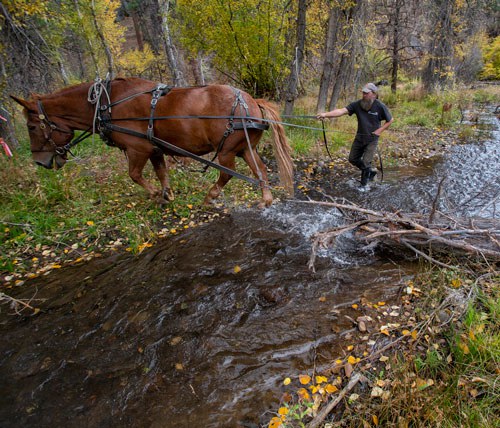When Chinook salmon returned to Whychus Creek in 2019, it felt like a conservation miracle. It was a cause for celebration--the payoff of decades of coordinated work to conserve and restore critical fish habitat on one of the Deschutes River’s key tributaries. For the Deschutes Land Trust, it was evidence that we, along with our partners, could really make a difference on an issue that has long plagued Central Oregon’s rivers and streams.
I’d venture that restoring habitats is one of the most important and most interesting things we do at the Land Trust, and I would bet my tele skis that many of our partners and supporters agree. Whether returning Camp Polk Meadow Preserve to native vegetation and a well-connected floodplain, creating better fish habitat in Whychus Canyon Preserve, or restoring forest health at the Metolius Preserve, the Land Trust is constantly improving the ways our natural systems work.
Increasingly, though, the entire concept of restoration in the era of climate change begs the question: what values and ideals do restoration approaches and outcomes reflect? And in a world that’s changing so rapidly, what is the reference condition we’re even aiming to return to via restoration?
The conservation community has historically framed restoration as a set of actions in service of discrete, nature-based outcomes, and the Land Trust is no exception to this trend (see the above fish anecdote). However, restoration can, should, and does benefit so much more than any one species, species assemblage, or habitat type. It also benefits human communities and the nature-dependent systems we rely on for survival.
Assigning values to different parts of the natural world is neither bad nor good; rather, it just is. What feels more relevant is acknowledging that restoration impacts people, just as people impact restoration. More often than not, human activity is the reason restoration must take place at all, and we inherently stand to benefit from this restoration, be it through cleaner air, cleaner water, better hunting opportunities, or more carbon sequestration. Yet, paradoxically, it becomes all too easy to remove the human element of restoration--to forget the responsibility we collectively share for ensuring restoration’s long-term success through our own actions.
Restoration is, at root, a humanistic pursuit and an incredible entry point for breaking down the arbitrary, binary, and ultimately nonexistent separation between people and the rest of the natural world. It is a powerful, unifying concept aimed at improving the planet we live on, even as that planet undergoes anthropogenic change at an unprecedented rate. Through restoration, we can express the extent to which we value and respect the incredible landscapes and species around us, but we do a disservice by choosing a select few species that deserve such respect.
In an earlier post on the concept of climate change resilience, I wrote that resilience, in many ways, represents a rejection of climate change denial or nihilism. Restoration, in its active pursuit of improvement, betterment, and support of the natural environment (even if from an imperfect, value-laden starting point), echoes this rejection of helplessness and negativity.
In the midst of the climate crisis, it’s no small feat to return Chinook salmon to Whychus Creek. Let that success remind us that restoration is not the end point of environmental stewardship, but rather a form of hitting the reset button to allow people to care for their surroundings into the uncertainty of the future. In turn, we will benefit from the services that rivers, forests, wetlands, grasslands, and wildlife provide to get us through that uncertainty.
Learn More:
- The Importance of Meadows
- Musings on how land trusts can respond to climate change in Anthroposphere: The Oxford Climate Review (written by Fiona)


